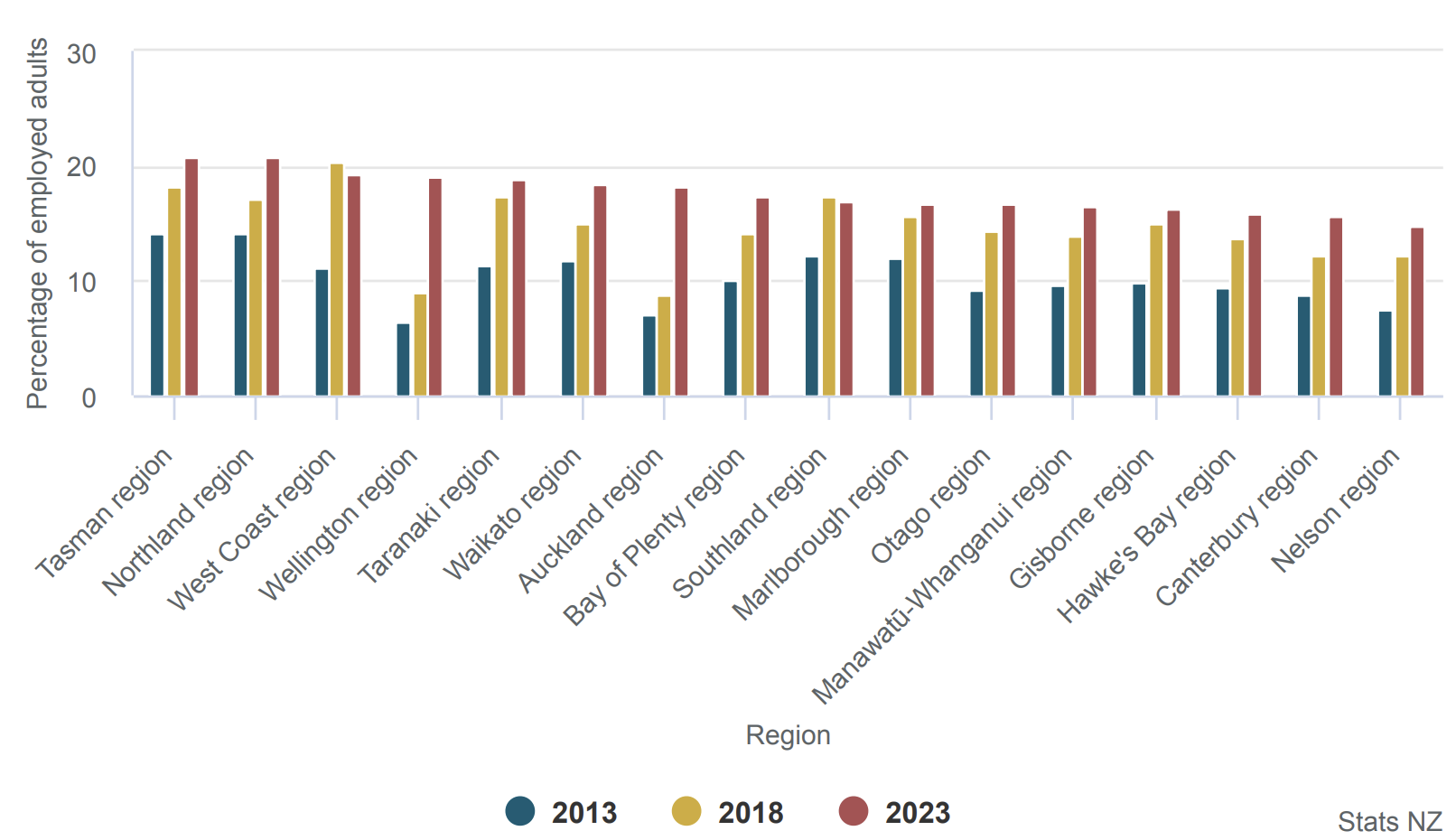
Which regions saw the biggest growth in WFH workers between 2018 and 2023?

The number of employees who were mostly working from home surged by almost 60% between 2018 and 2023, according to the latest Census data.
In 2023, there were 464,130 people in New Zealand who were mostly working from home, equivalent to 17.7% of the employed census usually resident adult population.
This is much higher than the 291,234 people who were recorded to be mostly working from home in 2018, according to the data, released by Stats NZ earlier this month.
By region, Tasman saw the highest percentage of employees who were working from home with 20.8% by 2023. This is followed by Northland with 20.7%, and then the West Coast with 19.3%.
On the other hand, Nelson had the lowest percentage of people working mostly from home with 14.8%, followed by Canterbury (15.6%) and Hawke's Bay region (15.8%). Other regions recorded:
According to Stats NZ, Wellington and Auckland saw the highest growth in people who were mostly working from home between 2018 and 2023.
There were 158,658 people mostly working from home in Auckland in 2023, nearly double the 72,099 people in 2018, according to the data.
In Wellington, there were 56,016 people mostly working from home in 2023, also nearly double that of the 24,909 in 2018.

The surge in working from home can be attributed to the rise of such workplace arrangements during and after the COVID-19 pandemic.
The traditional working arrangements on-site, however, are gradually staging their comeback as organisations across the world, such as Amazon, reintroduce full office returns.